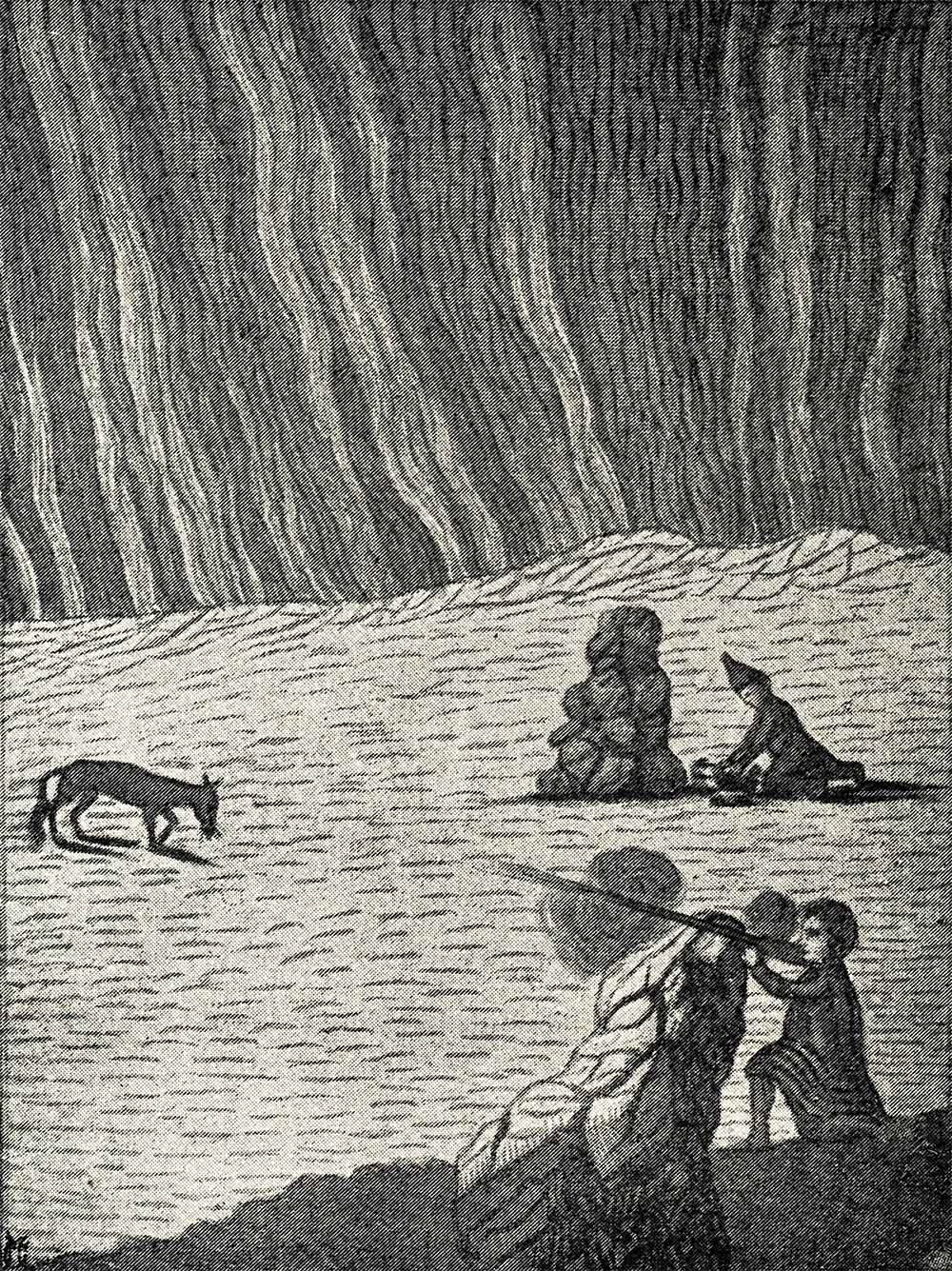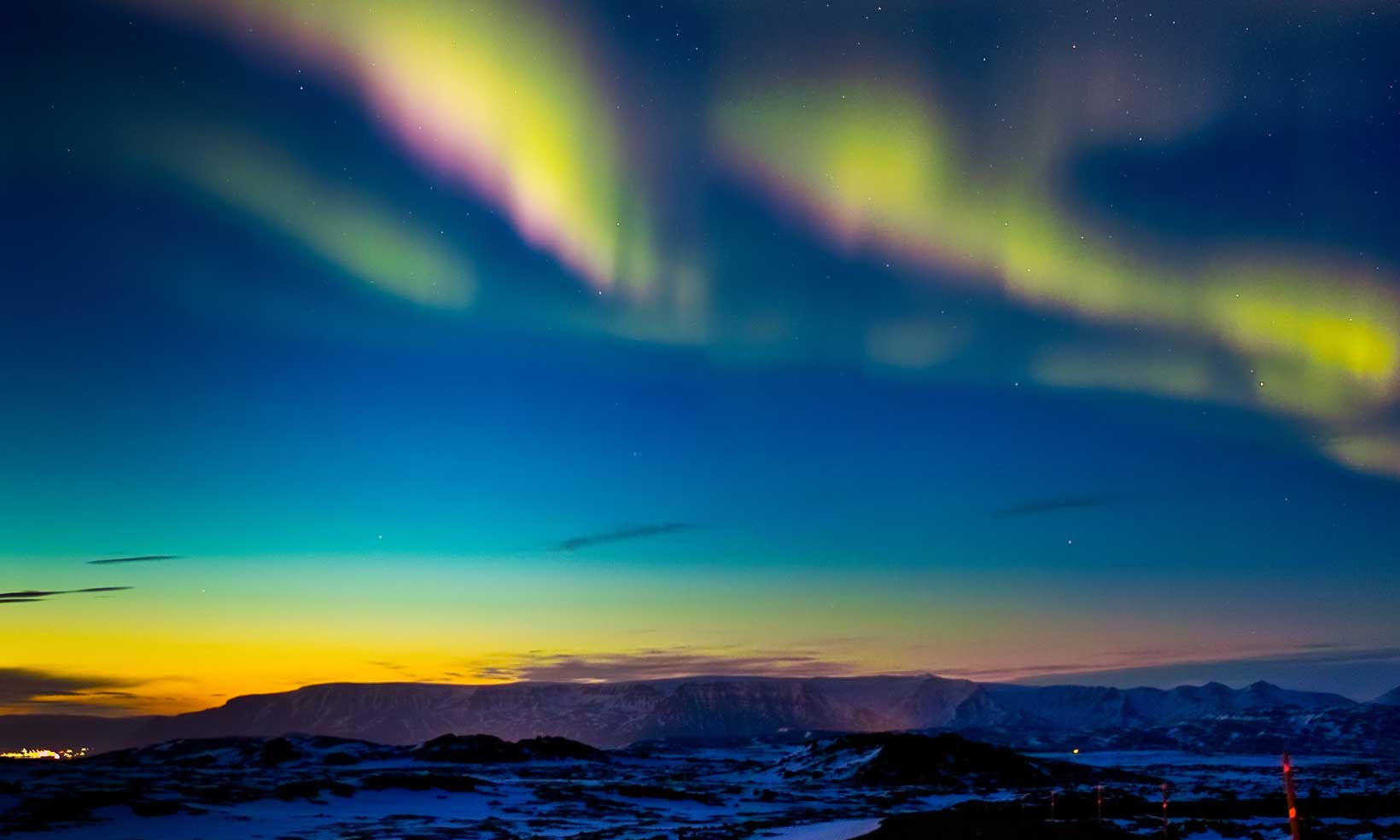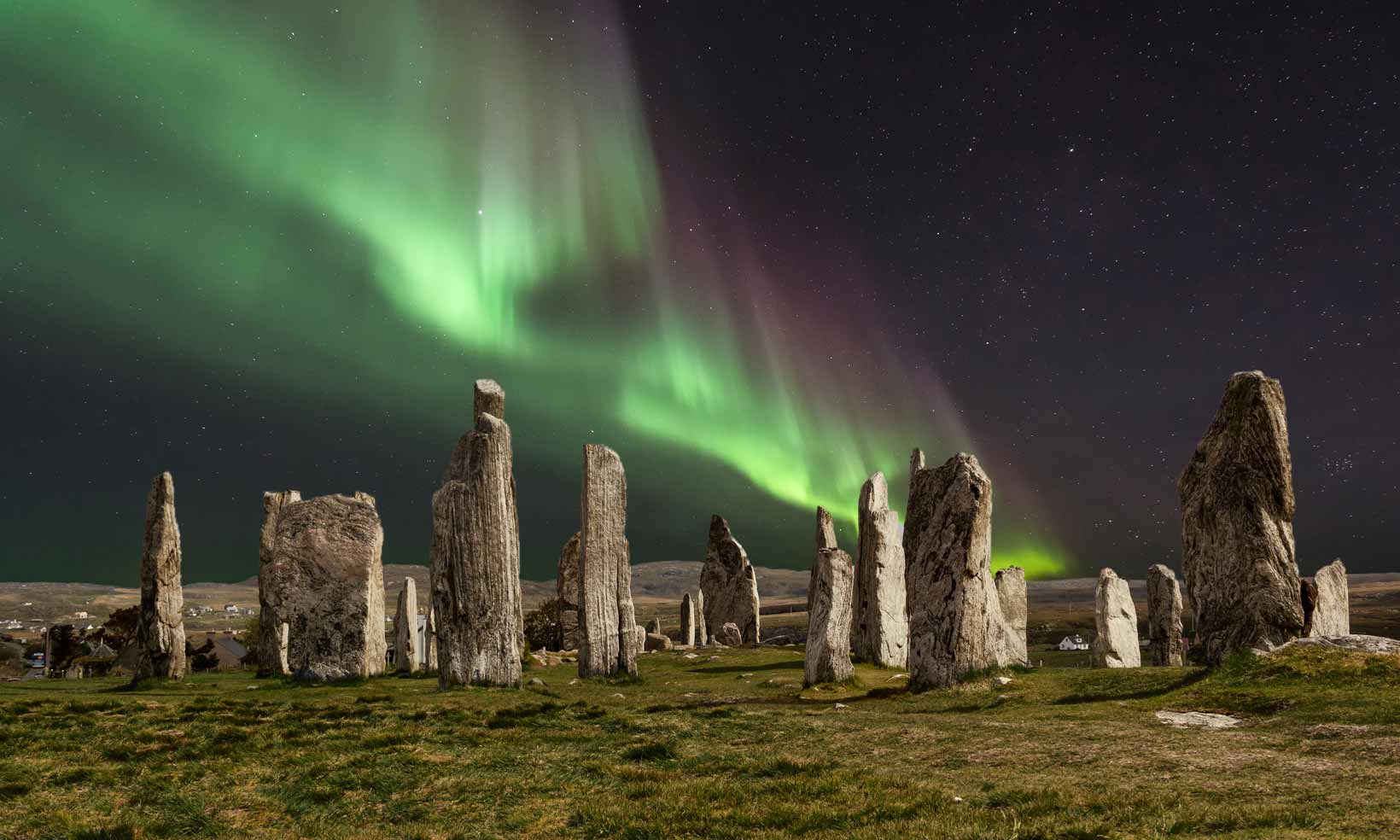In the early 17th century, the astronomer and scientist Galileo Galilei named this phenomenon the Aurora Borealis. Aurora was the Roman goddess of dawn, and Boreas was the Greek name for the north wind.
From one side of the sky to another a drapery, woven of light and colour is wafted; now here now there, first one then two, then several bands, one above the other, never at rest, and never the same form, hither and thither the folds sway with a soft, fascinating motion, as from one end to the other waves of light chase each other, over-taking, crossing, meeting, while the lower, intense border, displays the loveliest colours of red and green, the upper one fading into the dark background

Extract from: ‘Under the Rays of the Aurora Borealis’ 1882-1883 by Sophus Tromholt (source: FRR)
Tromholt was an astrophysicist from Denmark who was awarded a research grant to find out more about the causes of northern lights in the late nineteenth century. He contributed to the first International Polar Year between 1882 and 1883, setting up an auroral observatory in Kautokeino, Norway. He was also a keen amateur photographer and allegedly took the first photograph of the Northern Lights in 1885.
However, even by Tromholt’s time people had been studying the Northern Lights for centuries!
Aurora Borealis
In the early 17th century, the astronomer and scientist Galileo Galilei named this phenomenon Aurora Borealis. Aurora was the Roman goddess of dawn, and Boreas was the Greek name for the north wind. Galilei thought that an aurora was caused by the sunlight reflected from the atmosphere.

This display of coloured light is caused by the interaction of the solar wind with the Earth’s magnetic field and atmosphere. The solar wind carried electrons from the sun’s atmosphere into space. These charged particles (ions) are drawn into the Earth’s magnetic field, particularly at the North and South magnetic poles, and down into the upper atmosphere (ionosphere). When the particles collide with gases in the atmosphere, energy is created. Some of this energy is given off in the form of light emissions; called the Aurora Borealis or Northern Lights in the northern hemisphere and the Aurora Australis in the southern hemisphere.

The red, green, blue and violet colours of aurorae are produced when the charged particles collide with different gases in the atmosphere, mainly compounds of nitrogen and oxygen. They can take various forms shaped by the Earth’s magnetic field lines; the most common types are arcs, bands and curtains. Billions of watts of electricity are generated by the solar wind in a single auroral display; this can interfere with power lines, radio and television broadcasts, and satellite communications.
In the northern hemisphere, the Aurora Borealis is seen mainly in the far north, but can sometimes be visible as far south as Europe and even the UK. Aurorae are most commonly seen in September, October, March and April. They can take place at any time of day or night but are more spectacular on a clear night with no clouds, when colours are set against the dark sky. In Finnish Lapland, the Northern Lights are in the sky for 200 nights of the year. They are a huge tourist attraction there, and in other countries around the Arctic Circle, including Norway.
Studying the Northern Lights
The Sodankyla Geophysical Observatory in Finnish Lapland is an important centre for the study of the Northern Lights. Scientists conduct research into the solar wind and how it affects the earth’s atmosphere, they also explore the possibilities of harnessing the energy produced by the aurorae.
For your own research into the Northern Lights, here are some useful links:
- Go Finland Complete Guide to the Northern Lights
- Visit Norway
- Canadian Geographic Fun Aurora Borealis Facts
- Clips of Joanna Lumley’s 2011 BBC Documentary Land of the Northern Lights, in which she travels up through Norway to Svalbard in search of the mysterious Aurora Borealis, can be viewed on YouTube.
Aurora in the UK?
As we have seen, it is sometimes possible to view the Northern Lights in the UK.

- How do you think this is possible? What evidence do you have to support your answer?
Revontulet
Indigenous people across the Arctic were the first to witness the phenomenon of the Northern Lights, and had many explanations and names for this amazing display of celestial light. In Finland, there are numerous folk tales about the origin of the lights which are known as revontulet or ‘fox fire’. The most common features the arctic fox and his bushy tail. In one version, the fox’s tail touches the mountains as it runs across the arctic landscape, causing sparks to fly off into the sky as the Northern Lights. In other versions, the fox’s brush-like tail sweeps snow up into the sky. There is, however, an ancient Finnish word similar to the word fox which means making magic. So perhaps the real meaning of ‘revontulet’ is ‘magic lights’?
- Read more about indigenous myths and folklore
